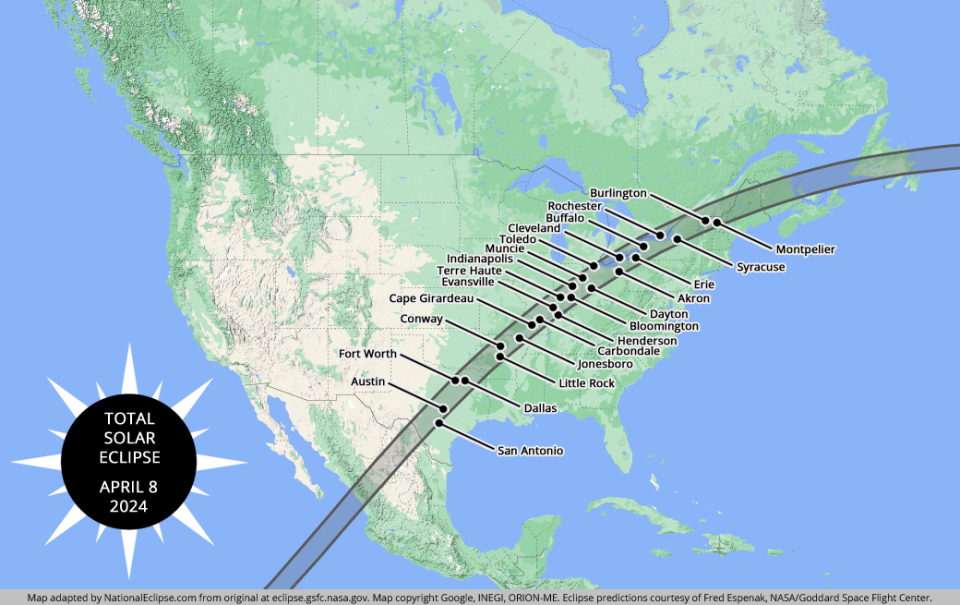When is the 2024 solar eclipse? Everything to know about the once-in-a-lifetime event

In just a couple of months, a sizeable chunk of the world will experience darkness for a few minutes during the day as a total solar eclipse moves from Mexico, through the U.S. across Texas and North America, to the coast of Newfoundland, Canada.
This year’s total eclipse will last longer than the one viewed by more than 20 million people in August 2017, and one won’t be visible from the U.S. again for another 20 years, according to NASA. Fifteen total solar eclipses have been recorded in the U.S. in the last 150 years, with the next one expected in August 2044.
What is a solar eclipse?
Solar eclipses occur when the moon passes directly between the sun and Earth’s orbits, blocking the sun from Earth's view either totally or partially.
A total solar eclipse means the moon is completely blocking the sun from Earth's view, whereas a partial solar eclipse means the moon is blocking only part of the sun.
When is the 2024 solar eclipse?
The 2024 solar eclipse will take place on April 8.
The complete shadow will fall on the U.S. starting in San Antonio, Texas, around 2:30 p.m. EDT (1:30 p.m. CDT), reach parts of Ohio around 3:15 p.m. EDT, and conclude in Presque Isle, Maine, around 3:30 p.m. EDT.

Most cities that fall within the predicted path of the total eclipse will see the eclipse for a duration of 3.5 to four minutes, with the area near Torreón, Mexico, experiencing the longest duration at four minutes and 28 seconds.
For the first time in over 200 years, parts of Southwest to Northeast Ohio fall inside the path of totality.
This article originally appeared on Cincinnati Enquirer: When is the 2024 solar eclipse? How long will it last?
